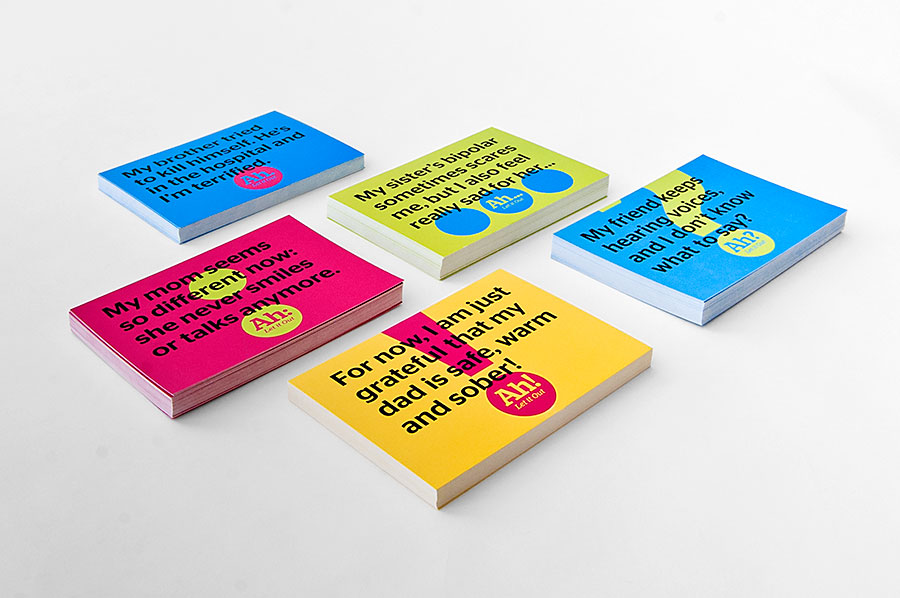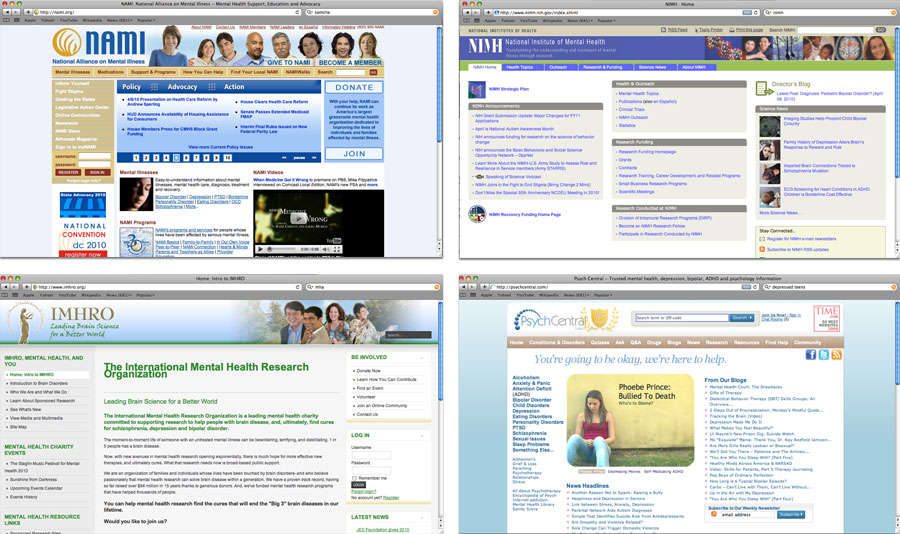The Ah Project is a non-profit initiative for adults (primarily 18–25 year olds) to express how loving someone with a severe mental illness has affected their lives. The intent of The Ah Project is to help rid the sense of isolation that accompanies mental illness and provide support for loved ones, while making the realities of a mental illness easier to discuss and accept for family members and friends.
The Ah Project began as my graduate thesis at SVA MFA Designer as Entrepreneur. After receiving my MFA, I collaborated with The Jed Foundation and received a Sappi: Ideas that Matter grant for implementation. With the grant, we were able to gather personal stories from friends and family members to produce postcards to be placed in student health centers around the country to drive the audience to the online community and provide support.
Advisor: Brian Collins
Concept
Identity Design
Strategy
Print Campaign
Online Community
"The first word, Ah! blossomed into all others.
Each of them is true."
–Kukei, 8th century Zen master
The center point of The Ah Project an online community, which serves as a place to express the emotions (guilt, frustration, anger, sadness, loneliness, relief) associated with being a sibling, child or loved one of someone with a mental illness.
18 to 25 year-olds do not often feel comfortable with traditional support groups, and without relatable online resources, this demographic has nowhere to turn. At the time, the available online resources address symptoms and treatments, and how to help care for someone with a mental illness; however, none of these organizations primarily address the needs of friends and family.
In contrast, The Ah Project approaches mental illness with an honest tone and an un-authoritative point of view, empowering users to focus on their needs.
The Name
The letters 'a' and 'h' imply a variety of different meanings when paired together. Depending on the pronunciation, positive and negative feelings are immediately associated with the simple sound. The name provides an all-encompassing, and therefore empowering method of describing mental illness – the moments of frustration, the moments of relief, the moments of anger and the moments of surprise.
Visitors use the online community as an outlet, uploading their artwork, photographs, videos and text, and utilize tagging as a way connect with others by emotion, relationship or form of media.
The site maintains a design sensibility that is light and youthful, and uses language that is clear and personal to provide educational resources and an outlet for emotion to the intended audience.
Research
Current Resources
The available resources for family members of someone with a mental illness are websites with acronym names such as: NAMI (National Alliance on Mental Illness), NIMH (National Institute of Mental Health), MHA (Mental Health America), and IMHRO (International Mental Health Research Organization). The missions of these organizations are noble, and they provide a wealth of information, but the visual and verbal language can often feel overwhelming, clinical and uninviting.
Problem:
The current resources available acknowledge that they have difficulty reaching transition-aged adults – 18 to 25 year olds.
Within the current online resources, text is heavy and overwhelming.
Language is clinical and impersonal.
Imagery is depressing.
Colors are bland.







